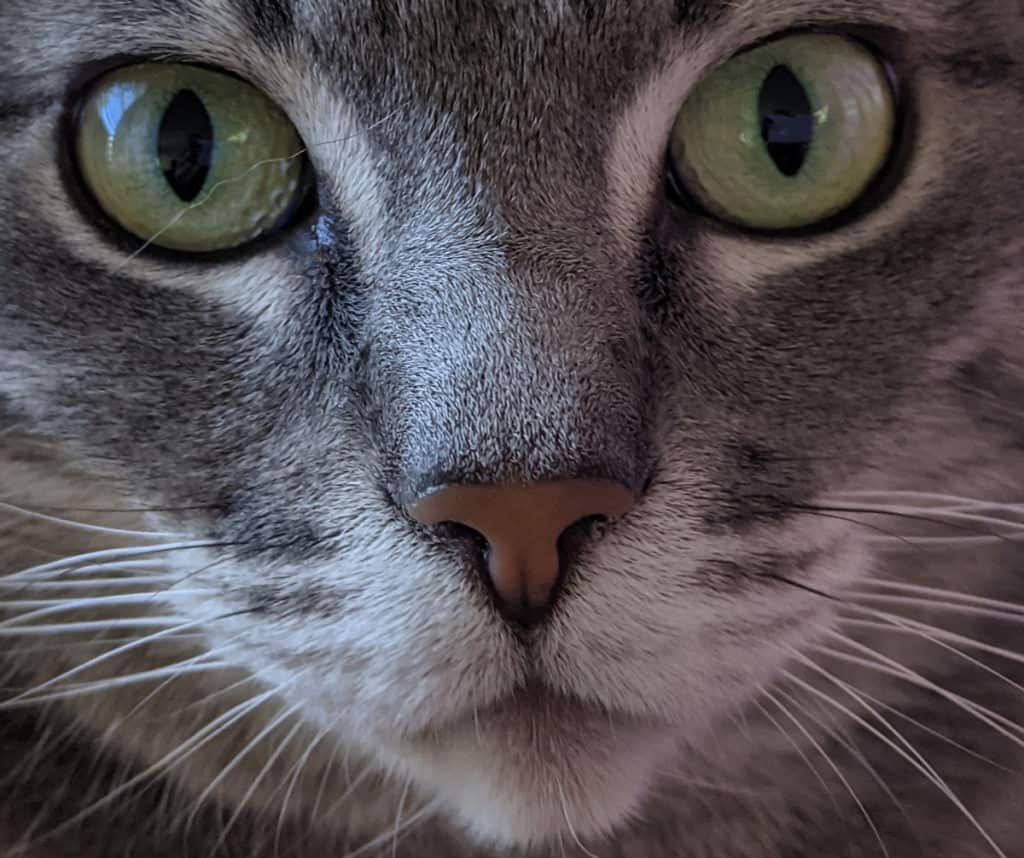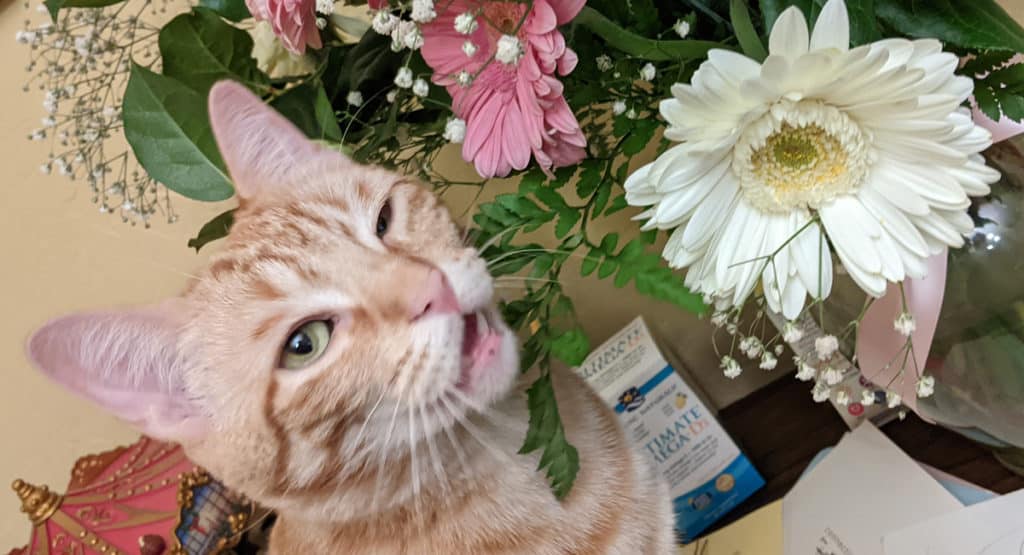How well can a cat smell? Not as good as dogs but far better than humans.
Like most carnivores, cats rely on their ability to determine which prey and food is good to eat and which to avoid. Cats also use their sense of smell to find mates, determine enemies, and identify their territories.
Cats mark their territory with urine and feces, so having a strong sense of lets a cat know what other cats have been in their territories. Male cats can detect from smell whether a female cat is in heat.
Cats Have 80 Million Smell Receptors
The domestic cat has about 80 million smell receptors. Dogs, with their superior sense of smell, have 300 million, while humans only have about five million.
Bring in anything new to your home and you will find your cat carefully smelling every inch of the item. Return home with the smells of another cat or other animal, and you will find your feline giving you the same thorough olfactory inspection.

Guided by Smells from Birth
Newborn kittens are born blind and almost deaf. It’s the young kittens’ sense of smell that draws them to their mother’s nipples to nurse.
Why Does My Cat Make that Weird Face After Smelling Something?
One of the wackiest things a cat does is to suddenly make a scrunched up face after smelling something. While it may look like your cat is having the most negative reaction to a scent, what the cat is doing is called gaping (similar to the Flehmen response seen in Big Cats and other mammals).

Gaping is the process by which a domestic cat will draw scents deeper in a scent organ located on the roof of their mouth. Called the vomeronasal (or Jacobson’s) organ, this organ allows the cat essentially smell deeper and be able to distinguish between similar smelling scents.
Why Do Cats Smell Each Other?
When do cats approach, they may smell each other faces or one cat may smell the read end of the other cat. Both actions allows cats to smell information about other felines. Smelling may help the cat decide if the other cat is a friend or enemy.
Smelling the face releases pheromones from glands located there. The rear end of cats contains a strong and unique oder emitted through anal glands.
Cats can learn a lot about each other by sniffing each other’s faces and rear ends as a greeting. Since each cat’s odor is distinct and serves as a form of identification, two cats can quickly determine if they have previously met.
When it comes to rear end sniffing, dominant cats typically initiate this behavior. Cats that don’t welcome another cat sniffing their rear end will typically react by hissing and batting at the offender or by sitting down to block access to their behinds.
Sense of Smell and Appetite
Since cats rely on their sense of smell to determine what to eat, cats with sinus infections or have nasal irritation may lose their appetite. Aging cats with a declining sense of smell will also tends to have reduced appetites. Warming up your cat’s food will help to increase the aroma and encourage your cat to eat more.
References
Banks, F. (2017). The Nose and Smelling. Treatment and Care of the Geriatric Veterinary Patient, 51.
Llera, R., & Buzhardt, L. (n.d.). Why cats sniff rear ends. VCA Hospitals. https://vcahospitals.com/know-your-pet/why-cats-sniff-butts






